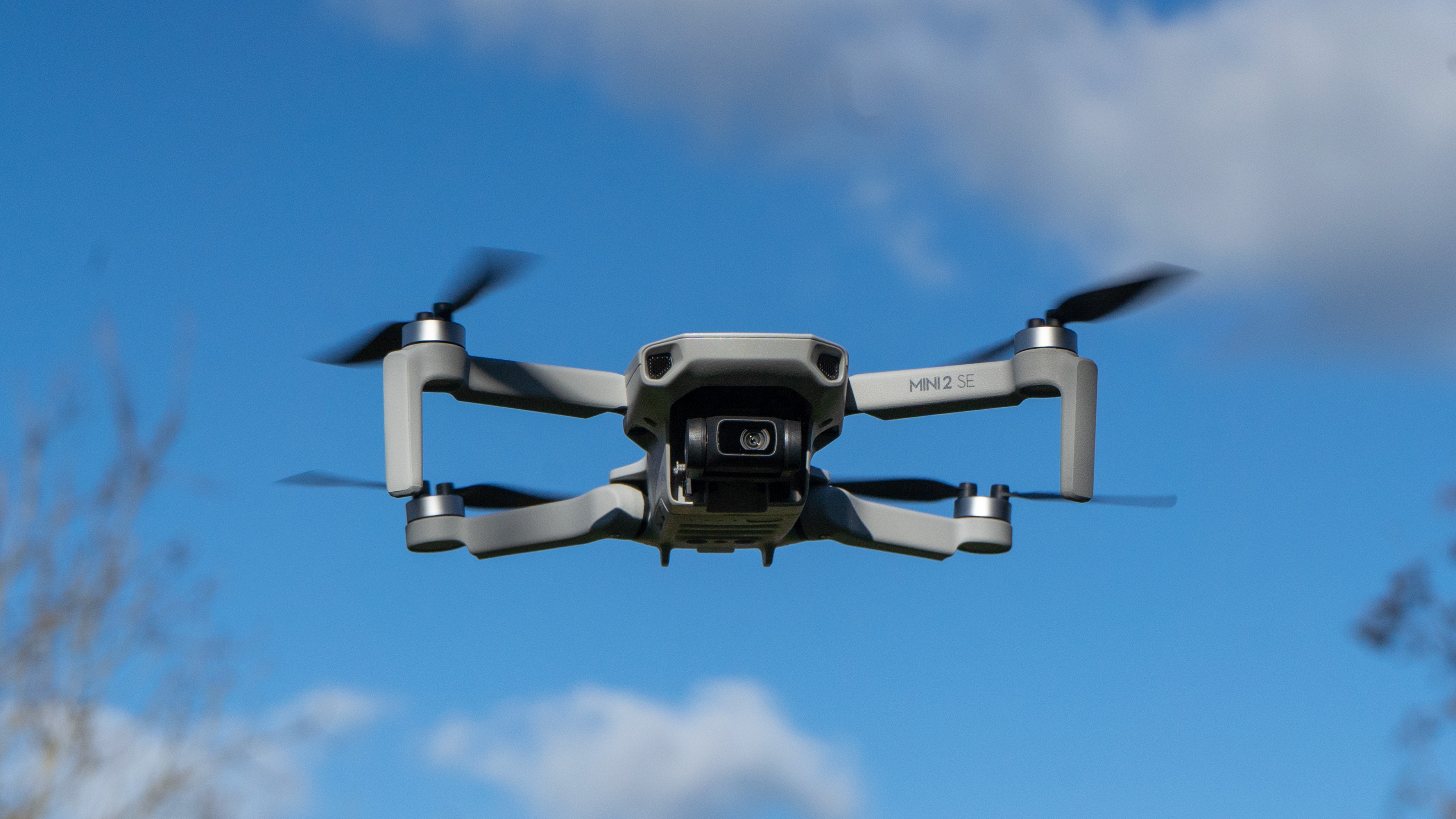
This drone, the successor to the Mini SE, has changed so little that it took us some time to get hold of it to do a full review. Instead, I added an update to my original review pointing out the significant difference that does exist – the all-new controller.
Max speed: 16 m/s / 35.8mph
Weight: 246g
Camera sensor: 1/2.3-inch
Field of view: 83˚ (24mm EFL)
Stills: 12MP (4000 x 3000)
Video: 2.7K (2720 x 1530) at 30fps / 1080P at 60fps
Flight time: 31 min (DJI lab)
Tested flight time: 19 min (15% remaining)
That's not to say that this drone isn't a high-tech marvel, but it does afford you, the reader, a certain cheeky advantage in that I'll be able to compare the Mini 2 SE against the drones you might consider – drones released more recently. That's because this drone category is very competitive for two reasons.
The drone is under the weight limit set by the FAA, CAA and other authorities of 250g (about 8.8 ounces), known as 'ultralight'. You don't need to take an online exam to operate it in the USA. As technology has improved, this category has quickly become dominant, with a lot of choice, and the SE series is DJI's cheapest option (it's almost certainly not a coincidence that 'SE' is has been Apple's tag of choice for the entry-level iPhone for some time.)
Just as the fruit-based phone brand don't cut that many corners with their iPhone SE, and borrow a slightly older frame but use relatively up-to-date software, DJI's haven't cut the 3-axis gimbal; the feature with steadies the camera as the drone flies, but have built this drone on what was originally the Mini 2 (which had a 4K camera).
The question, then, that the Mini 2 SE now faces is whether the trimming at the corners of the camera's spec, factored against the software and radio improvements, keep the Mini 2 SE at the front of the more competitive budget drone pack?
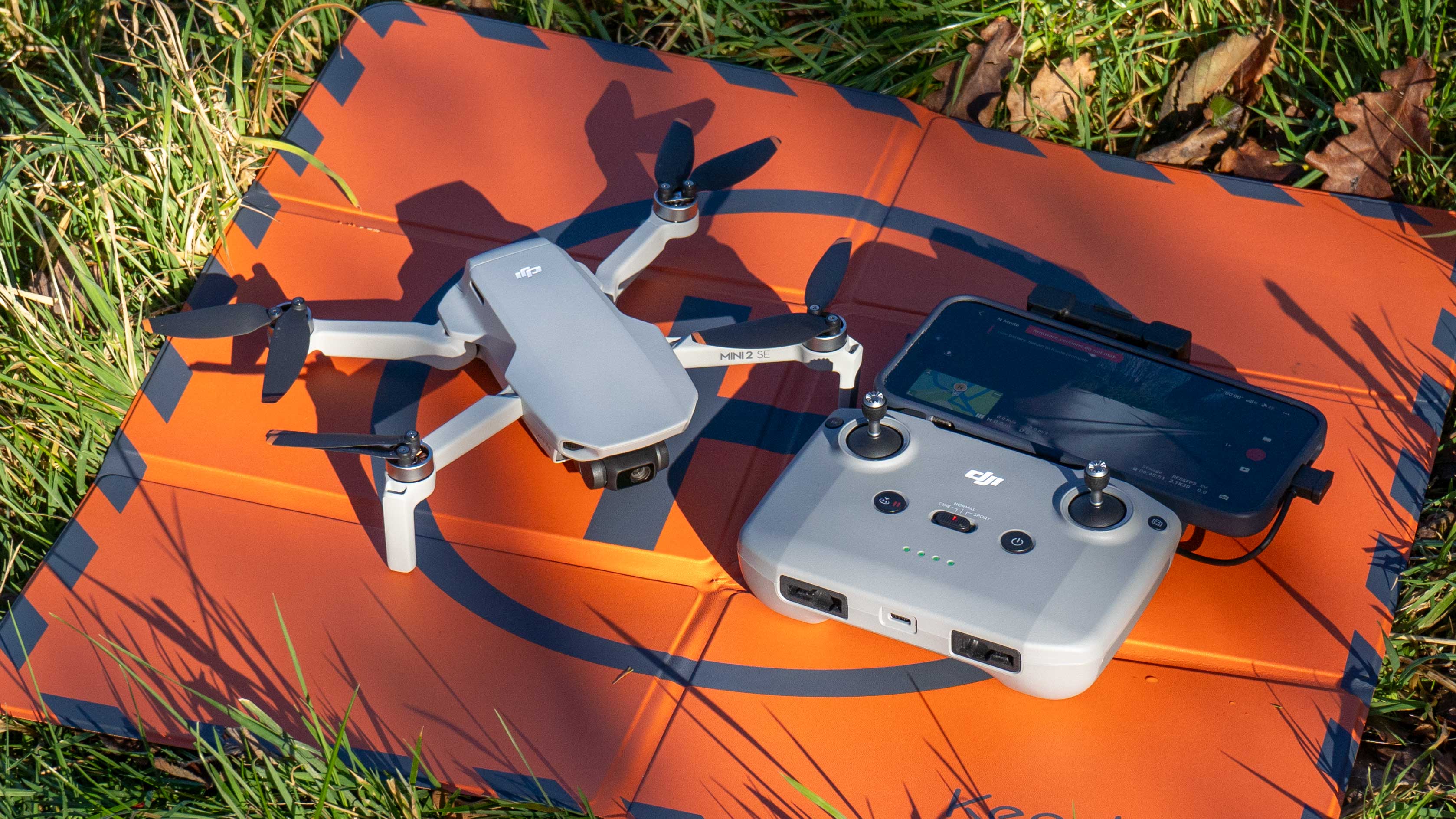
Build and handling
As I've mentioned, the Mini 2 SE's design has a little bit of history; specifically from the Mini SE and Mini 2 before that. That's not bad thing at all. They are both great folding drones when it comes to the design of the airframe (the drone). The same basic folding shape hasn't really seen a lot of change in DJI drones since the first folding Mavic – a few small refinements here and there – and because this drone isn't about new features but core functionality it's not a concern that we're not seeing a lot new.

That said, some aspects of the bundle have changed. DJI now include a moulded rubber strap to protect the drone, ideal when placed in the shoulder bag that comes as part of the "Fly More" bundle. This kit includes the bag (the same chic shoulder bag seen with the other DJI Mini drones, not the hard case from the earlier mini SE). Perhaps more importantly the kit adds two additional batteries and a charging hub – a very handy device which means you can leave the batteries to charge in sequence while you do something else.

The only thing that had started to feel a little dated with the craft's predecessor was the remote control, which was not only a bit compact but didn't have great battery life. Moreover, since DJI had more or less standardised the rest of their range (with some exceptions for pro models) around the RC-N1 design the older model looked a bit of an outlier.
Not only is the replacement more robust – and more convincing in hand as a result – but it carries a few advantages, not least a much better battery life and a modern USB-C charging socket. The power will also keep your phone topped up while you're using it; very handy given you'll be outdoors and have the phone screen on high brightness. Finally, the sprung pull-out antenna is not only studier than the hinged arms of the older model, but conceals a recess for your chosen phone connector cable. (You may think 'wireless is better' but a cable provides power and latency-free connection for a much more reliable phone-as-monitor arrangement, and is consistently the choice of more premium drones.)
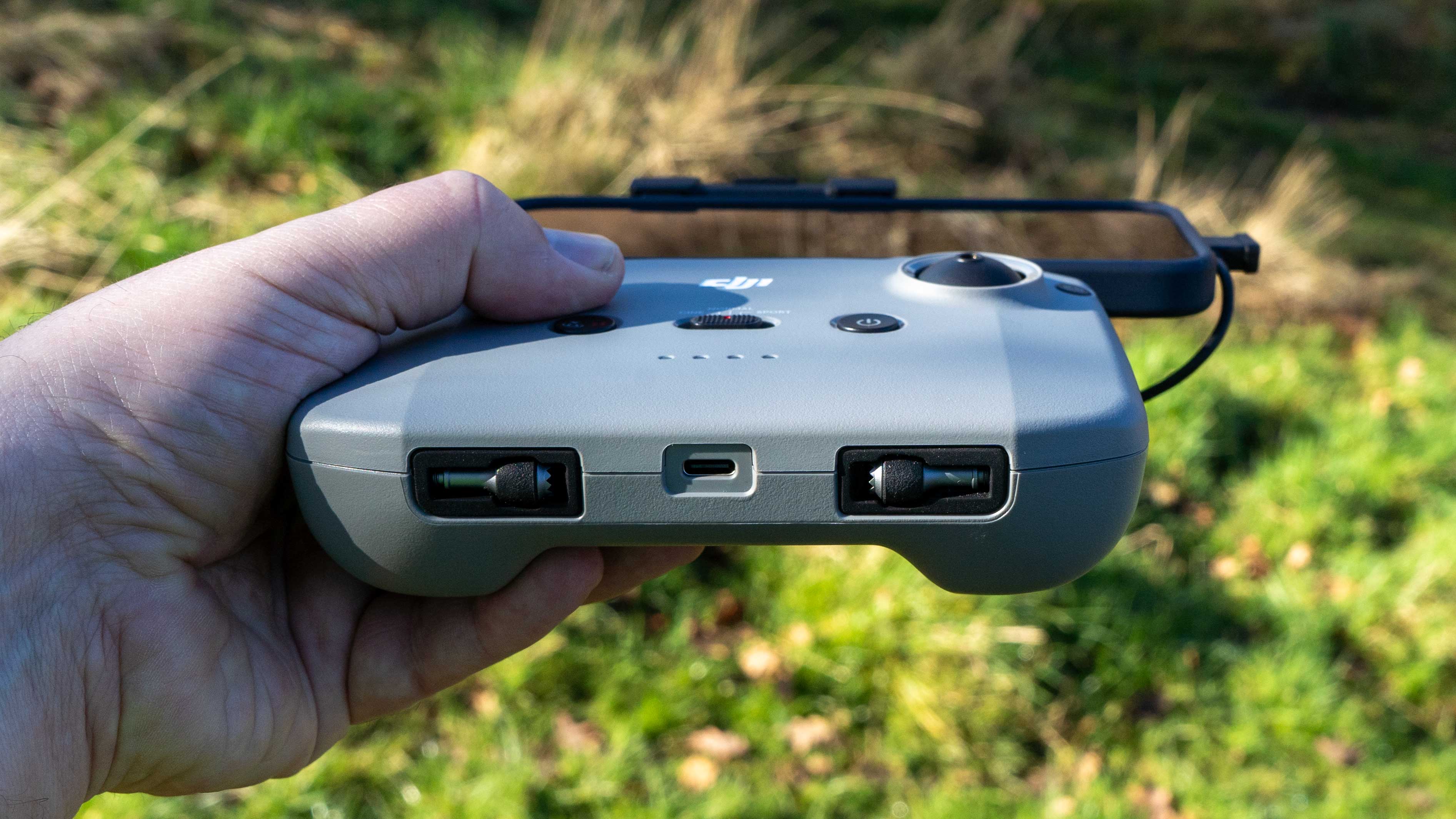
I do have a couple of gripes, though; my phone case has protrusions for the phone's buttons which are likely to get pressed by the rubber grips for the handset unless I keep it slightly off-angle. The aesthetics are the main issue there (and it has no problem holding my iPhone Pro Max with a case). Also, while it is useful that you can unscrew the control sticks and stow them in perfectly moulded recesses in the base of the unit, I can't help worrying about losing them!
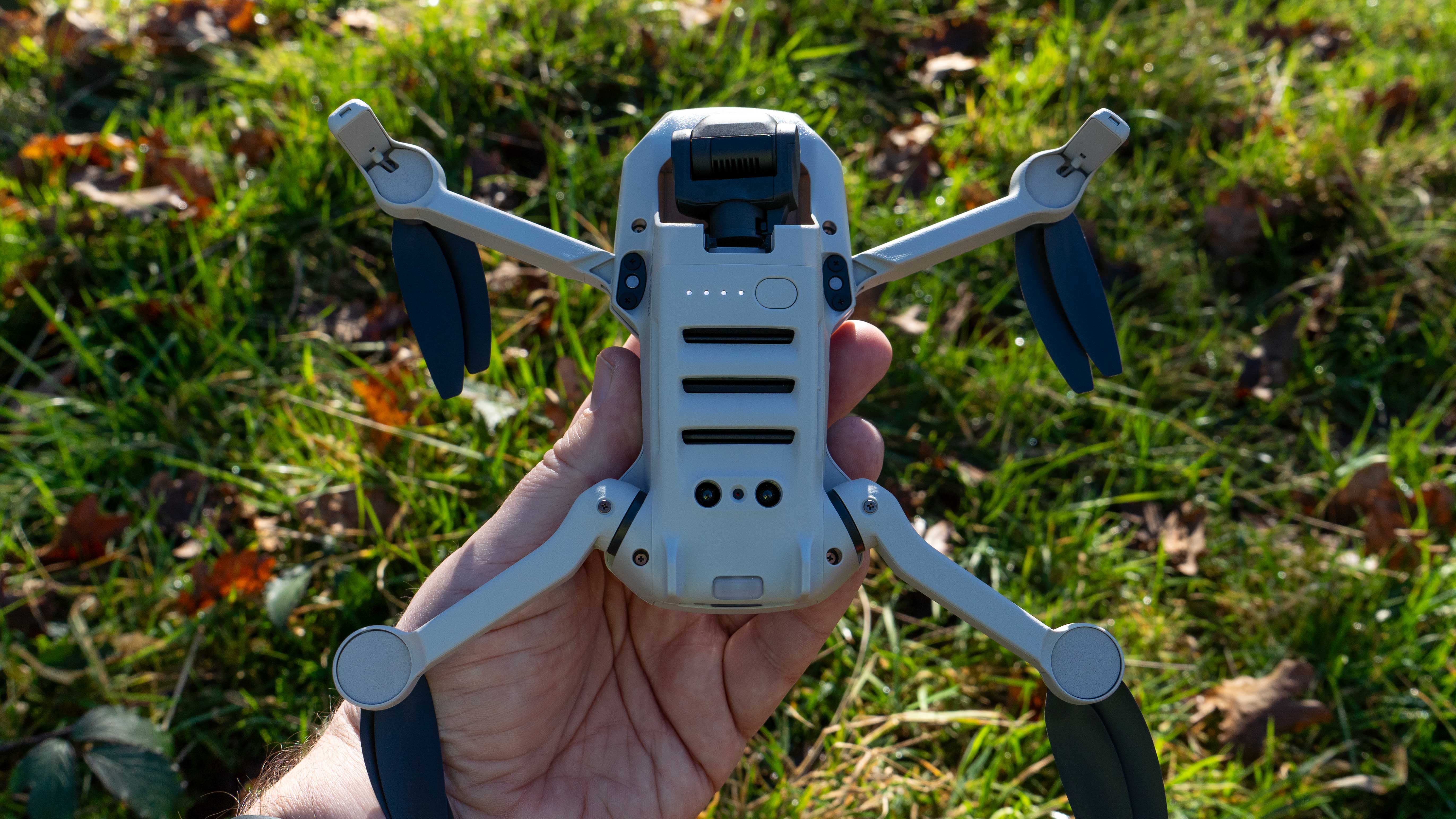
The back of the drone has a place for the MicroSD card and a flap for the the battery. The base of the drone has three vents, sensors which detect how close the surface is to assist with the automatic landing, and the power switch. The 4 pinprick lights serve as a battery strength meter so the drone can also act as a battery tester (unlike some DJI drones, the batteries don't have the tester built-in, and if you don't have the Fly More kit, you need the battery to be plugged into the drone to charge it).
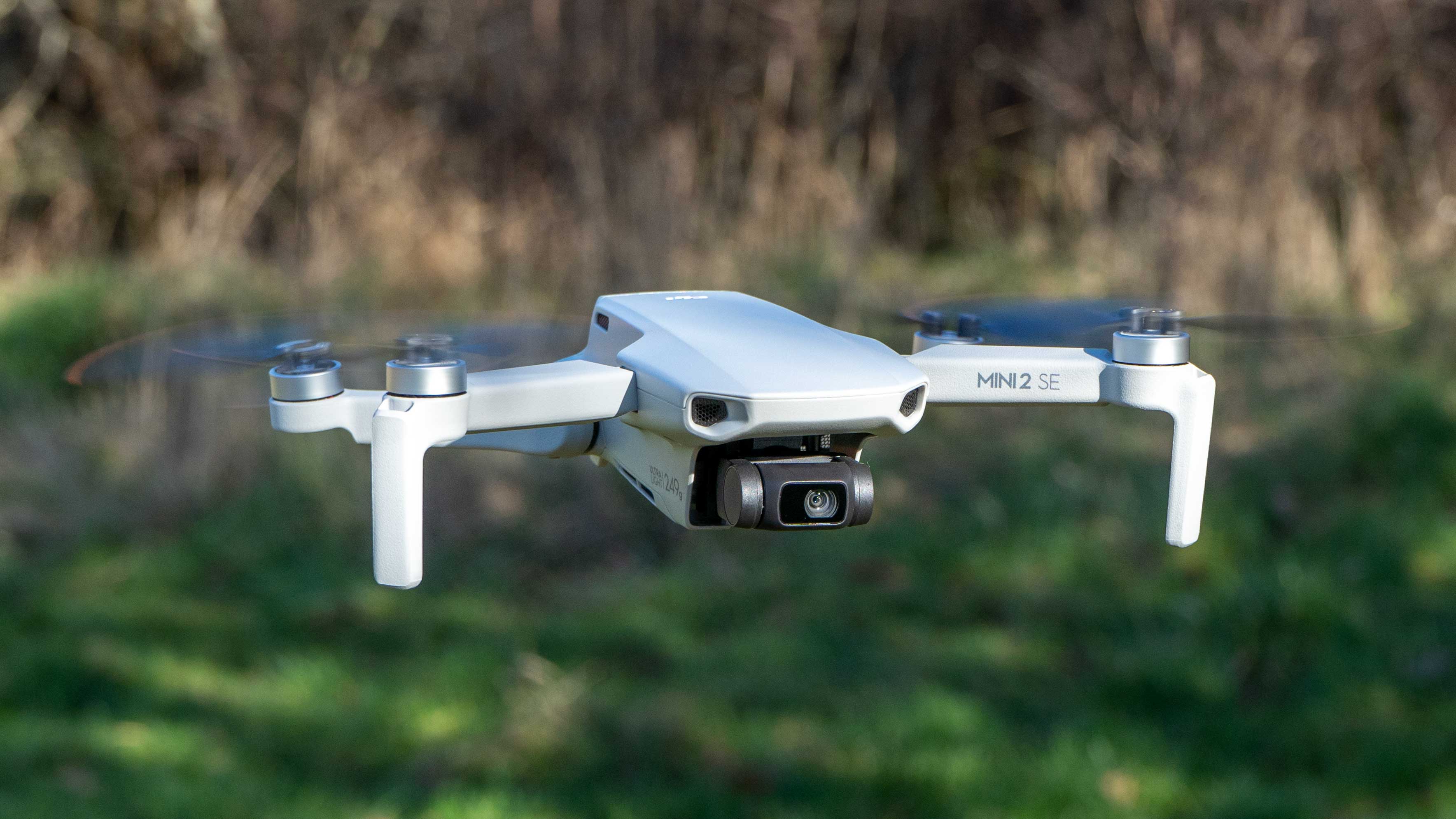
Like all folding drones, you'll need a flat surface to take off from – the drone isn't as tall as the average blade of grass. I recommend carrying a landing pad. Operation is straightforward though, and the drone doesn't insist on re-calibrating every time like some bargain drones.
DJI has included the Cine / Normal / Sport control which lets you decide the speed limit for the drone – useful for capturing smooth video or chasing cars. I found hard turns in sport were tricky for the gimbal, while, personally, Cine could have been even slower!
Performance
In flight the Mini 2 SE is as confident as its predecessors which, to be honest, is a level of capability I still find a little surprising given the limited weight the device offers against the wind. It also manages to pass on this confidence through fresh software which has the slickest built-in tutorial in the business; this is a real help for first-time pilots.

The drone easily reaches the limits of its range with no loss of signal, even when I tested near 'noisy' urban areas; since regulations insist you maintain eye contact with the device this shouldn't be an issue.

The QuickShots feature also has some nice polish, with the software able to identify the subject – in the example above me – then track them using one of the pre-defined paths to create a very shareable clip. This process is very slick, and the way the drone can identify humans on screen feels impressive to a long-time operator like me, though is an ability shared other drones now. I was impressed with how smoothly the drone performed its mission and returned.
The only slight irritation I felt in flying was my landing – as the drone got near the pad I found it difficult to nudge the craft toward the centre of my small landing pad without it seeming to exaggerate the movement. It landed within a couple of feet of the take off point automatically, but I would still like the ability to very gently guide the drone in the last two feet of its automated descent. Instead I seemed to end up pushing it a bit too far. It didn't seem to mind hitting a couple of blades of grass, but I did!
Video sample
Photo samples
My advice to any photographer? Switch the auto exposure bracketing on. As the samples show the camera has a tendency toward quite harsh contrast and given there is only a standard 8-bit dynamic range bracketing will give you a choice of exposures.
Disagreeing with the auto exposure isn't wrong either – I had to do it a lot, but I didn't mind. Bright skies and darker ground will cause that a lot. But the manual 'Pro' mode is easy to use, as is the tap to expose.
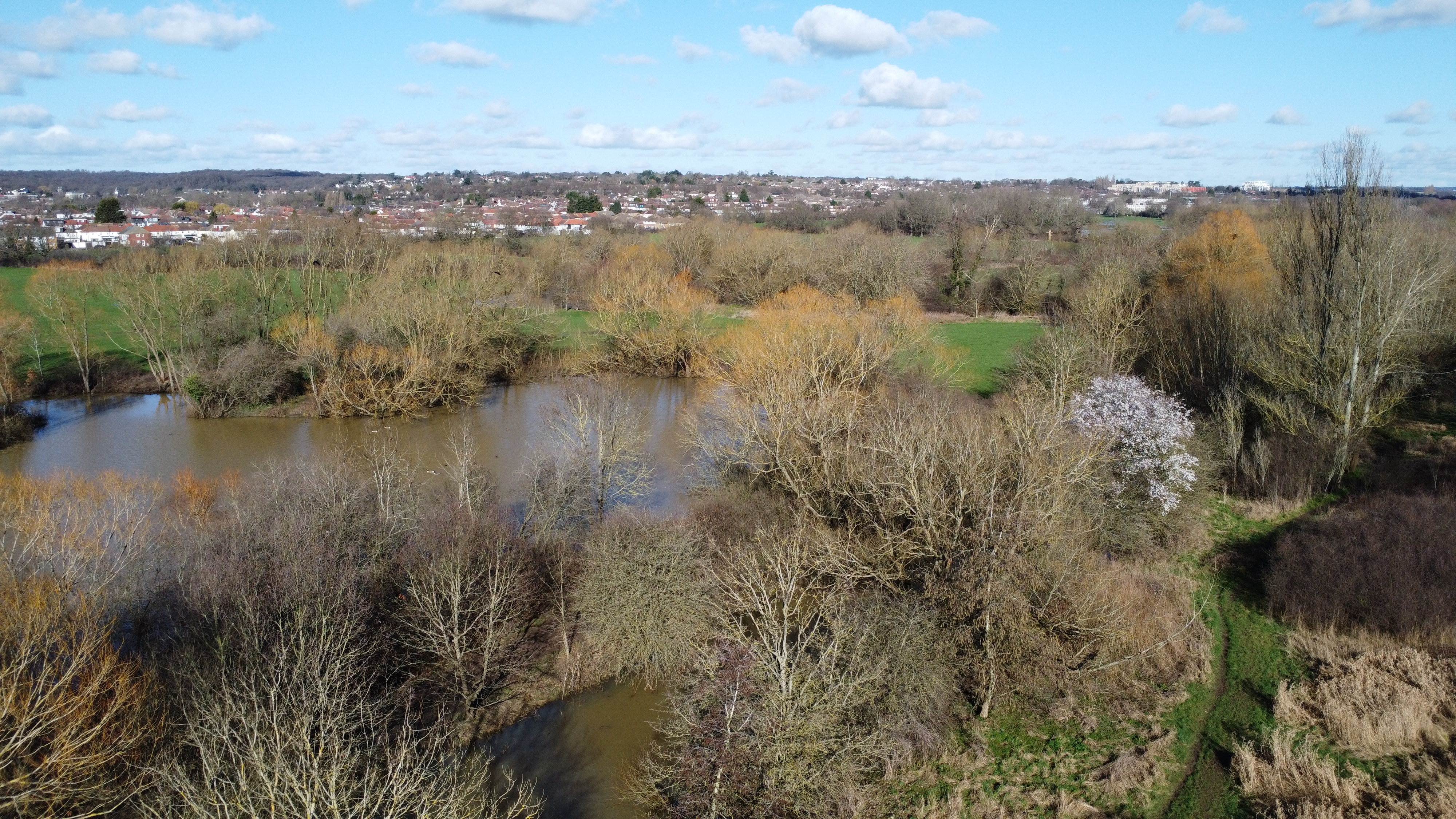

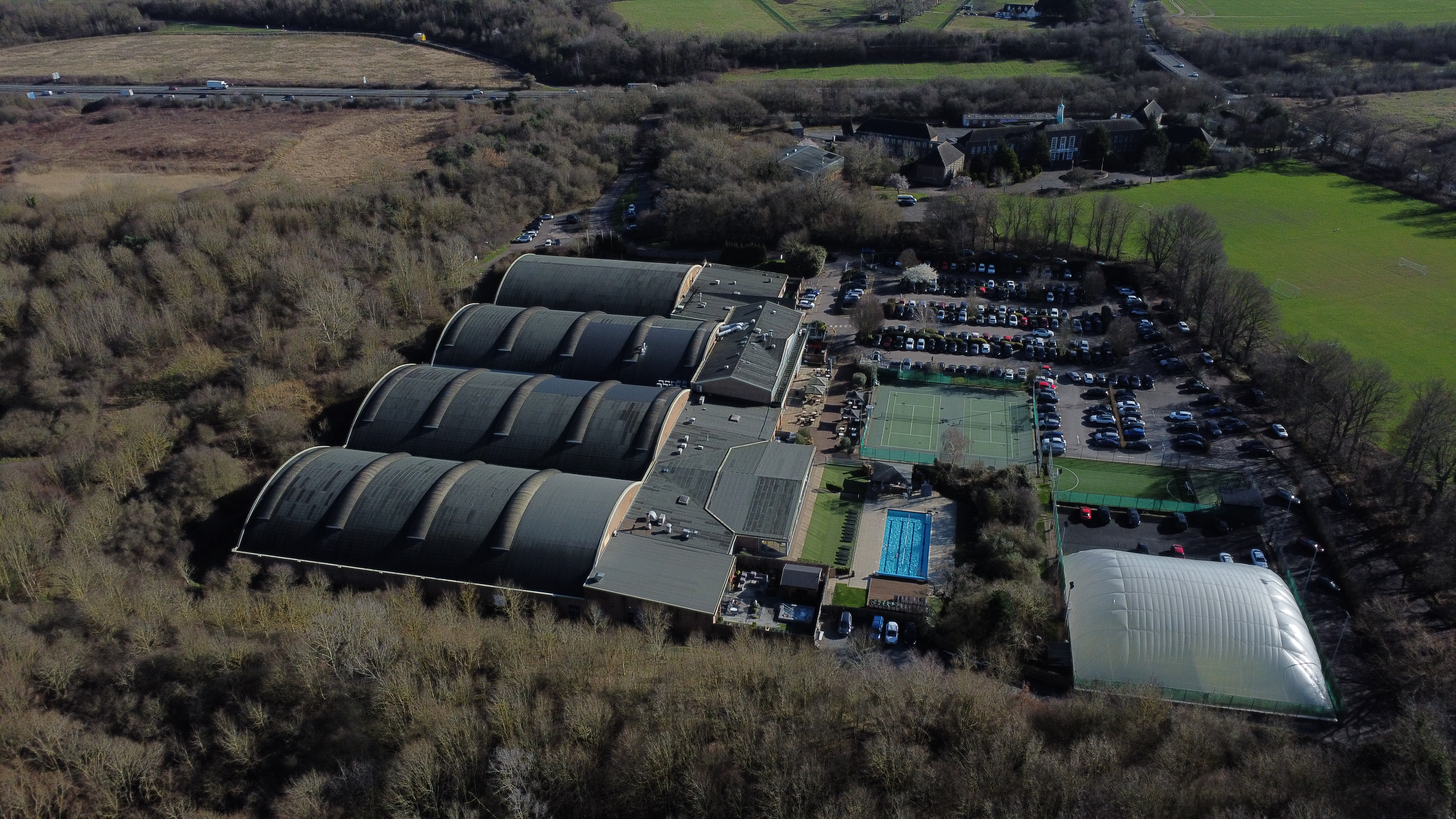
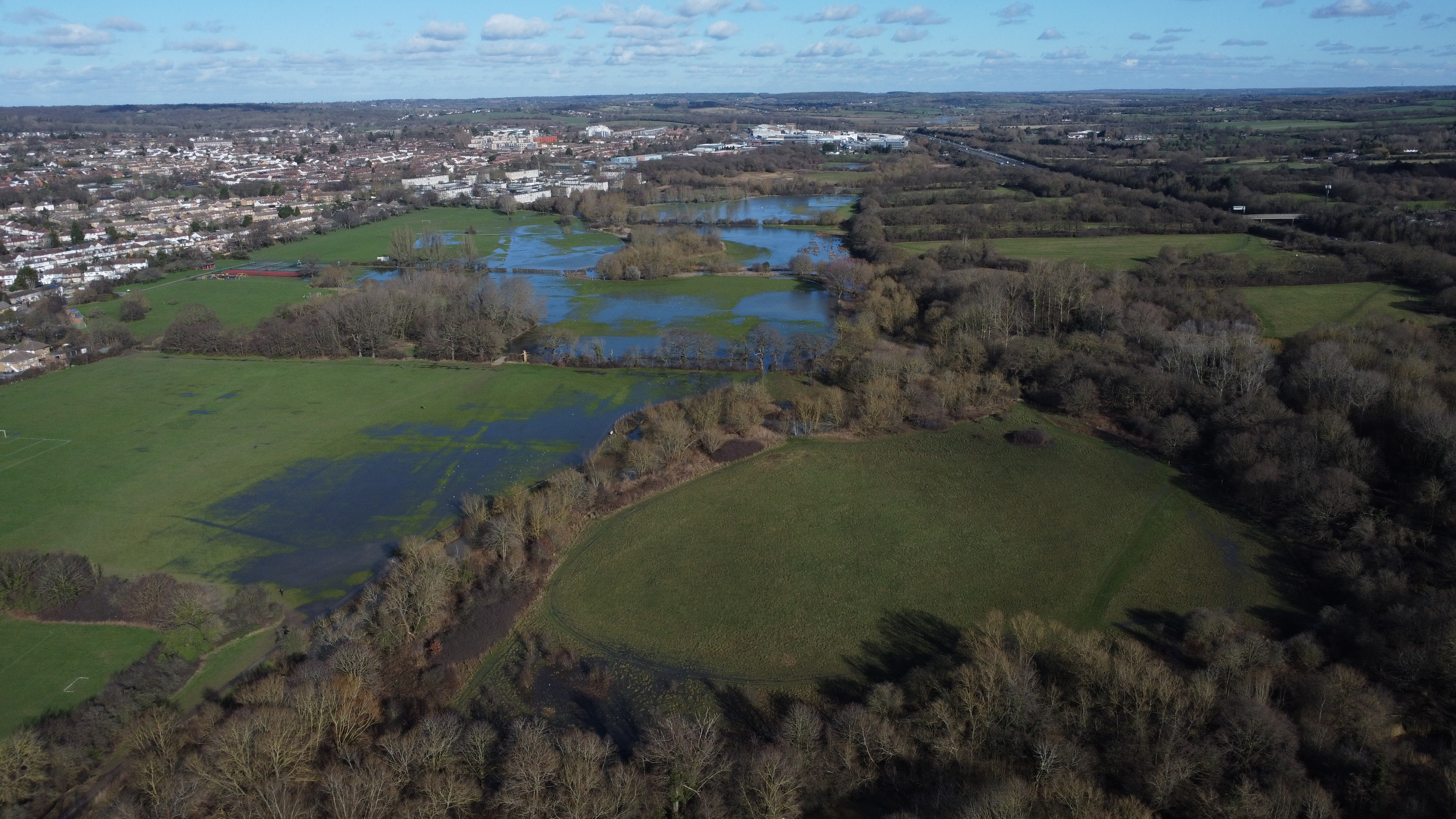
The Raw image I lightly processed in Photoshop's tool came out nicely; there is a profile for the optics in the system so the fringing seen toward the corners of the image is minimised, and it is nice to have the opportunity to make my own decisions about the levels (personally I find DJI's default approach can be a bit contrasty, though it usually impresses).

Overall Verdict
The Mini 2 SE, even a little way into it's life cycle, still offers excellent value for money; in many respects it feels like a premium drone and I'd be willing to bet that a good number of people would see footage from this drone and not be able to separate it from its more expensive cousins.
It's frustrating not to get 4K, especially when it is now available from at least one other budget drone with a working 3-axis gimbal, and, as is nearly always the case I have my doubts about how close I'll ever get to the claimed 31-minute battery time, but the sheer quality of execution in the features DJI have delivered is still unmatched.
Ontop of that, even now, when most videos are shared on tiny screens and viewed that way, the case for 4K should probably be left to more serious creators. Better to enjoy quicker transfer times. Perhaps the fun could be served with a few more QuickShots, and I'd like to see the gimbal even better able to stand up to sharp turns in the wind, but the Mini 2 SE is unarguably brilliant value.
Should you buy the DJI Mini 2 SE?
✅ Buy this if...
- You want a high quality beginner drone
- You want a software tutorial
- You want useful core features like panoramas.
🚫 Don't buy this if...
- You want a very long battery life
- You want to fly in challenging weather conditions
- You want 4K video







